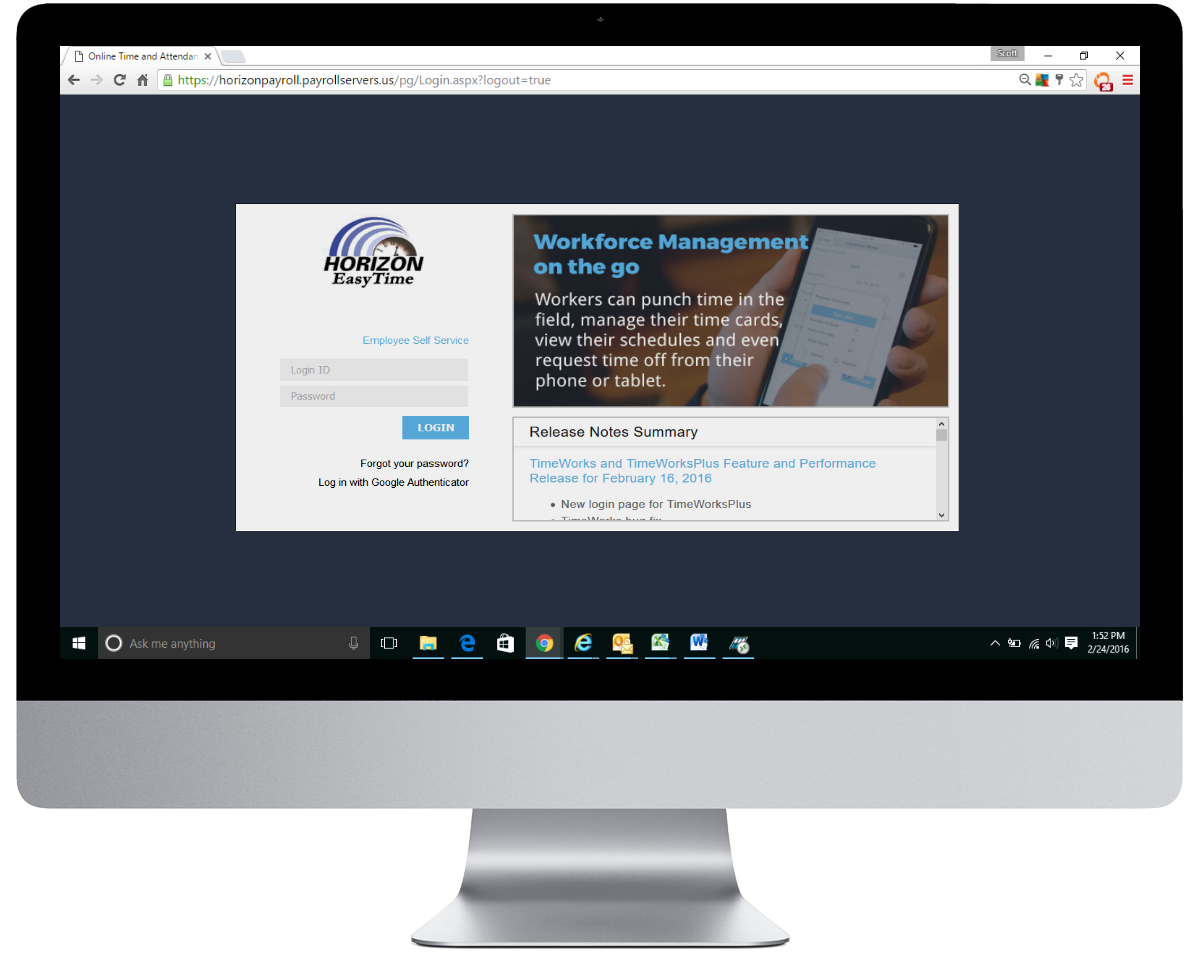3 min read
Choosing the Best Employee Timekeeping Software for My Business
Dependable timekeeping is one of the most important contributors to the financial health of your company. Not only does it build and maintain trust...
Expert payroll management services with a personal touch.
View Solution Read Guide HR Support
HR SupportSimplify and personalize HR with a team of HR experts on-demand.
View Solution Read Guide Time & Attendance
Time & AttendanceWhy spend more unnecessary time and money managing your workforce?
View Solution Read Guide Hiring & Onboarding
Hiring & OnboardingTurn your candidates into employees with hiring & onboarding solutions.
View Solution Read GuideAdd On Solutions automate everyday tasks, prevent mistakes, and simplify business compliance.
View SolutionHelpful downloads and eBooks to empower your business.
Helpful tax and HR alerts to help keep your business compliant.
Payroll and tax-related forms and documents.
Horizon's blog provides valuable insight into payroll, compliance, human resources, and more.
See our client success stories for a case study on how we can help your business.
Payroll and HR strategy requires intelligent technology, personal attention and specialized expertise in the needs and nuances of your business.
We provide payroll and tax processing services for businesses from 1 to 1,000 employees or more. Today, we have nearly 1,000 customers in 40 states.

3 min read
Dependable timekeeping is one of the most important contributors to the financial health of your company. Not only does it build and maintain trust...

4 min read
Accurate timekeeping is undoubtedly one of the top ways to ensure your company’s financial health. Small errors, even those that affect several...

3 min read
You don’t need a crystal ball to see the latest trend in employment law today: Fair work scheduling. Also called predictive scheduling, it means...

4 min read
As you wrap up 2018 and look ahead to 2019, be sure to check out these work-related, unofficial holidays. They can be a fun way to interact with your...

3 min read
As an employer, you know the Fair Labor Standards Act (FLSA) requires you to track how long your hourly employees work and what they earn. How you do...

1 min read
Think you don't need automated timekeeping? Think again. But what exactly is it and how can it help your business?

1 min read
When businesses run afoul of labor provisions, the fines can be sizeable. Recently, Walt Disney Co. reached an agreement with the Department of Labor...

1 min read
The restaurant industry is known for its high employee turnover rates. According to the National Restaurant Association, "the turnover rate in the...

1 min read
There is an Epidemic of Employee Time Theft As employers, we like to think we can trust our staff members. Without trust, not much can be achieved,...

3 min read
You've probably heard a lot lately about the FLSA rule changes. I know we've blogged about it (along with many others). We've also heard that the...

2 min read
You've probably heard about the recent changes to the FLSA (Fair Labor Standards Act). As Forbes puts it, these changes will make millions more...